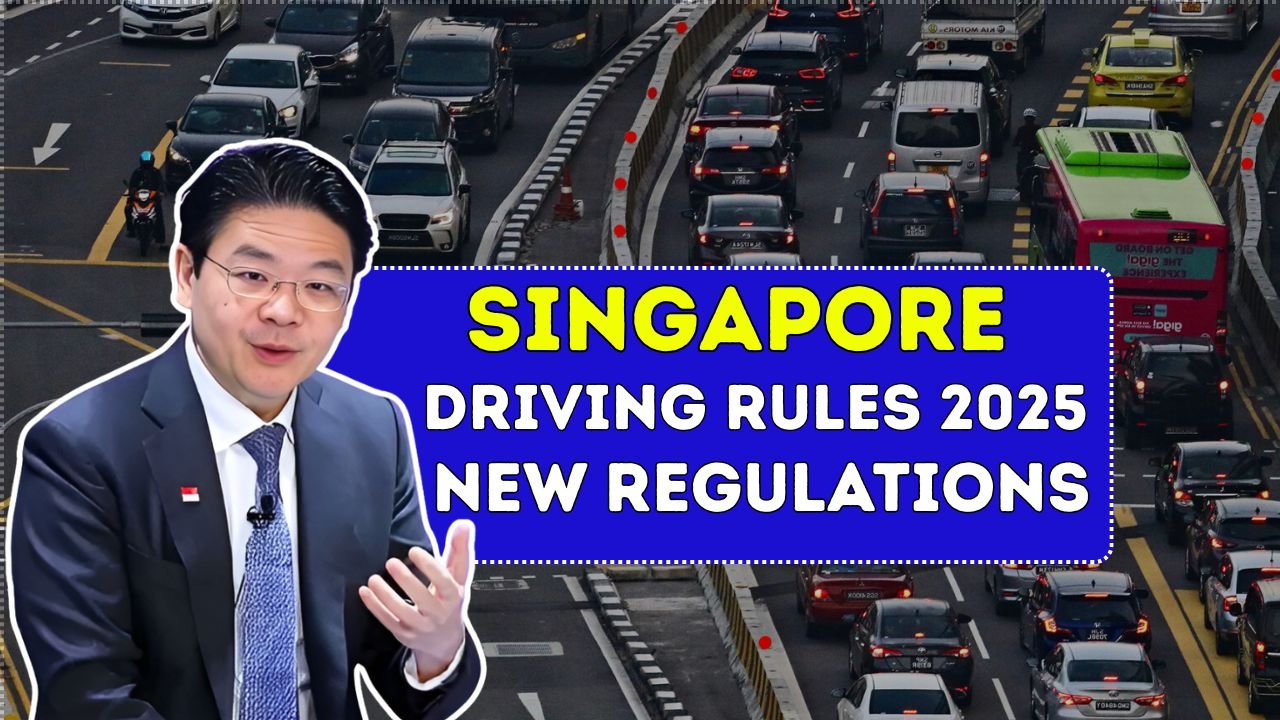Join on WhatsApp
Get the latest updates directly on WhatsApp – motivation, news & more!
Singapore has long been known for its strict traffic laws and well-regulated road systems. These rules are designed to maintain order, reduce accidents, and ensure the safety of motorists, cyclists, and pedestrians. In 2025, new driving regulations have been introduced, marking one of the most significant updates in recent years. Motorists are expected to adapt quickly to avoid penalties, as the government continues to emphasize road safety and responsible driving.
This article explains the major changes to Singapore’s driving rules in 2025, why they have been introduced, and what every driver must know to stay compliant.
Why the New Driving Rules Were Introduced
Singapore’s road network is among the busiest in the world, with high vehicle density in a relatively small space. As urban development continues, road safety challenges have grown. The government reviewed traffic patterns, accident statistics, and emerging transport trends before introducing the new rules.
The main objectives of these regulations include:
- Reducing road accidents and fatalities
- Improving safety for vulnerable road users such as cyclists and pedestrians
- Supporting sustainable transport initiatives
- Ensuring motorists adopt responsible and disciplined driving habits
Key Driving Rule Changes in 2025
Motorists in Singapore must be aware of several important updates that came into effect in 2025. These include new fines, stricter enforcement measures, and additional safety requirements.
Stricter Speed Limits in Residential Zones
Speed limits in many residential and school zones have been reduced to enhance safety for children and elderly pedestrians. Drivers who exceed these limits face heavier fines and possible license suspensions.
Enhanced Penalties for Distracted Driving
Using a mobile phone while driving has always been illegal, but in 2025 the penalties have become more severe. Even holding a phone briefly without making a call can result in immediate fines and demerit points.
Compulsory Safety Checks for Motorcycles
Motorcyclists must now undergo regular safety inspections to ensure their vehicles meet updated safety standards. This includes stricter checks on braking systems, lights, and exhaust emissions.
Stricter Drink-Driving Laws
The legal alcohol limit for drivers has been lowered, with zero-tolerance policies for new drivers and professional drivers such as taxi and delivery riders.
Priority for Cyclists and Pedestrians
New rules give cyclists and pedestrians greater priority at crossings. Motorists are required to slow down and give way, with non-compliance resulting in higher penalties.
How These Rules Affect Motorists
For most drivers, these changes mean adjusting habits and becoming more cautious on the road. Motorists will need to plan routes carefully, particularly when traveling through residential zones, and avoid risky behaviors such as phone use or speeding.
Public transport and sustainable travel are being encouraged, meaning stricter rules for private vehicle users. While some drivers may view these changes as restrictive, they are ultimately aimed at creating a safer and more efficient road system for everyone.
Penalties and Fines in 2025
The fines for traffic offenses in Singapore have increased to reflect the seriousness of violations. Examples include:
- Speeding in residential zones: higher fines and more demerit points
- Distracted driving: immediate fine, license suspension for repeat offenders
- Drink-driving: mandatory court appearance, heavier fines, and possible jail time
- Failure to give way to pedestrians or cyclists: significant penalties and points deducted
The government has emphasized that strict enforcement will continue, with cameras and road patrols playing a key role in catching offenders.
What Drivers Should Do to Stay Compliant
Adapting to the new rules is not difficult if motorists remain disciplined and alert. Here are some steps to follow:
- Always check for updated road signs, especially in school and residential areas
- Avoid using mobile phones completely while driving
- Schedule regular vehicle maintenance and inspections
- Be extra cautious near pedestrian crossings and cycling paths
- Never drive under the influence of alcohol, even in small amounts
By following these steps, motorists can avoid fines and contribute to safer roads in Singapore.
Benefits of the New Driving Rules
While stricter regulations may feel inconvenient, they offer several benefits:
- Improved Road Safety: Lower accident rates and fewer fatalities.
- Safer Environment for Vulnerable Users: Cyclists, motorcyclists, and pedestrians enjoy greater protection.
- Healthier Communities: Reduced accidents and lower vehicle emissions through stricter inspections.
- Fairer Enforcement: Clearer rules and penalties ensure consistency for all motorists.
Public Response to the 2025 Driving Rules
Reactions to the new rules have been mixed. Many Singaporeans welcome the changes, highlighting the importance of protecting children, cyclists, and pedestrians. Others, however, feel the stricter penalties are too harsh and may disproportionately affect drivers who make small mistakes.
Despite the debates, most agree that Singapore’s commitment to road safety has made it one of the safest places in the world to drive.
Final Thoughts
The introduction of new driving rules in Singapore in 2025 marks a significant step in improving road safety and ensuring responsible driving behavior. While the changes may require adjustments, they ultimately aim to protect lives, reduce accidents, and create a safer road environment for all.
Motorists who stay informed, follow the rules, and prioritize safety will not only avoid penalties but also contribute to a culture of responsible driving in Singapore. The key message is clear: adapt to the changes, drive responsibly, and play your part in making Singapore’s roads safer for everyone.

